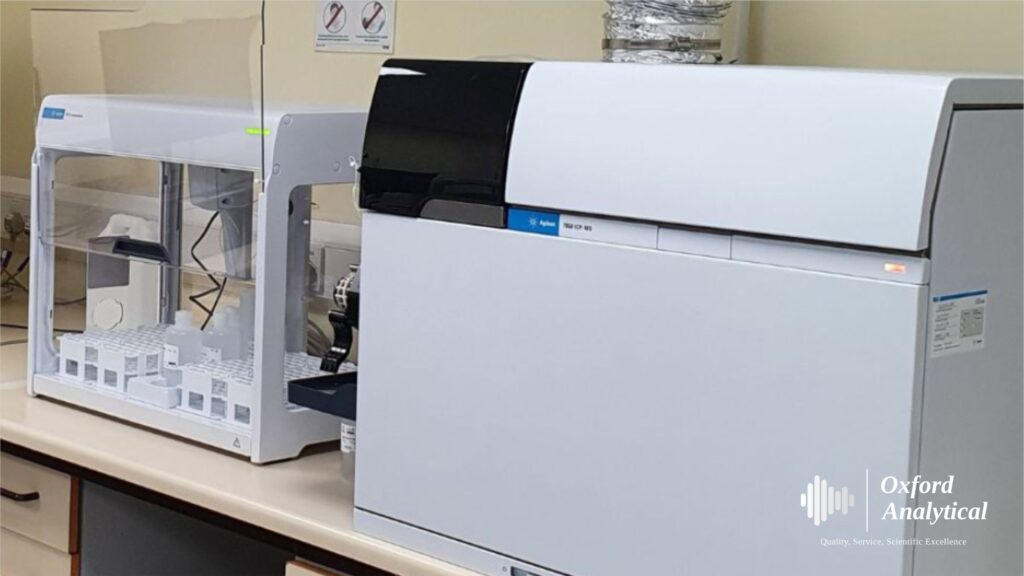Testing for metals in glass comes through two different routes. The first being total composition so batches meet criteria for registration. The second being trace element analysis for metals such as cadmium, lead and chromium.
Total Composition
Total composition of glass products can be required for certain registrations. Through the use of ICP-OES and ICP-MS we can measure the elements of interest and stoichiometrically back calculate the concentration of the compounds present in the glass giving an end mass balance of the product.
During total composition analysis, the glass sample is first prepared and dissolved to release its metallic content. Then, the prepared solution undergoes analysis using the chosen instrumentation. The results provide valuable insights into the elemental composition, identifying elements that might be intentionally added for specific properties, as well as impurities that could affect the glass’s integrity and performance.
These findings play a crucial role in ensuring the glass meets regulatory standards and customer requirements, preventing potential issues such as brittleness, discoloration, or reduced durability. Additionally, total composition analysis aids in research and development, allowing scientists and engineers to fine-tune glass formulations for optimal performance in various applications, ranging from architectural glazing to fibre optics and advanced optical devices.
Trace Element Analysis
Trace element analysis involves sophisticated analytical techniques, such as inductively coupled plasma mass spectrometry (ICP-MS) or atomic absorption spectroscopy (AAS). These methods offer high sensitivity and precision, capable of detecting even the smallest traces of elements. By analysing trace elements in glass, manufacturers can monitor the presence of impurities that might have originated from raw materials or the production process. Detecting impurities like heavy metals at low levels is essential, as they can lead to undesirable effects, such as reduced transparency, altered mechanical properties, or compromised chemical resistance in the glass.

Moreover, trace element analysis is vital in industries like pharmaceuticals, where glass containers for drugs must meet stringent purity standards to prevent contamination and ensure the stability of the contents over time. By meticulously evaluating trace elements in glass, manufacturers can maintain the highest quality standards and enhance their products’ reliability across various applications.
Glass products also need to be tested for impurities which may potentially leach out of the product while it is being used. For instance, if glass is used for food stuff containers, or as a cup for making tea, the concentrations of toxic elements need to be determined. This can be done through complete destructive testing of the sample, or through extraction (leaching) experiments which mimic how the glass will be utilised in reality.
We have done some work in the past on the product which is used to create glass for perfume bottles which included total composition and impurity testing. If this testing is something you require for your product, get in touch!

